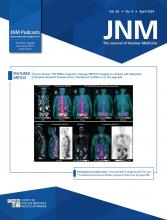Abstract
Brown adipose tissue (BAT) is present in a significant number of adult humans and has been postulated to exert beneficial metabolic effects. Lean, non-diabetic patients undergoing clinical positron emission tomography (PET)/computed tomography (CT) imaging are more likely to exhibit incidental BAT activation. The aim of this study was to assess metabolic changes associated with the cold-activation of BAT and to compare baseline blood metabolites in participants with varying amounts of active BAT. Methods: Serum blood samples were collected from healthy adult volunteers (body mass index 18.0-25.0 and age≤35 years) before and after 2 h cold exposure. 18F-flurodeoxyglucose (FDG) PET/CT imaging was performed immediately following cold exposure. Activated BAT was segmented and fasting glucose, insulin, lipid, and other blood metabolite levels were correlated with volume and intensity of active BAT. Using a median cutoff, subjects were classified as BATHIGH or BATLOW. Results: A higher volume of activated BAT was associated with significantly higher pre-cooling glucose and insulin levels (P<0.001 for each). Pre-cooling thyroid stimulating hormone (TSH) and triglyceride levels were significantly higher in the BATHIGH than in the BATLOW group (P = 0.002 and P<0.001, respectively). Triglyceride levels tended to increase over the cooling period in both BAT groups, but increased significantly more in the BATHIGH group (15.7±13.2 md/dl; P<0.001) than in the BATLOW group (4.5±12.2 mg/dl; P = 0.061). Conclusion: These findings may indicate that BAT is recruited to counteract incipient “pre-prediabetic” states, potentially serving as a first-line protective mechanism against very early metabolic or hormonal variations.
- Copyright © 2022 by the Society of Nuclear Medicine and Molecular Imaging, Inc.







